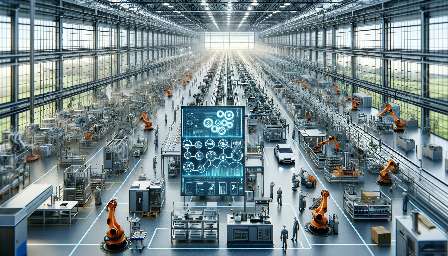Facility layout design is a crucial aspect of manufacturing operations, impacting efficiency, productivity, and cost-effectiveness. With the advancement of technology, computer-aided facility layout has emerged as a powerful tool for enhancing the design and planning of manufacturing facilities.
The Importance of Facility Layout in Manufacturing
Optimizing the physical arrangement of equipment, workstations, and material flow within a manufacturing facility is integral to achieving operational excellence. An effective facility layout can streamline production processes, minimize material handling, reduce lead times, and enhance overall workplace safety and ergonomics.
Understanding Computer-Aided Facility Layout
Computer-aided facility layout leverages computer software to model, visualize, and analyze different layout configurations. This technology enables manufacturing professionals to efficiently explore various design alternatives and assess their impact on workflow, space utilization, and resource allocation. By simulating and testing different layout scenarios, organizations can make informed decisions that align with their operational objectives.
Compatibility with Manufacturing
Computer-aided facility layout complements the broader discipline of facility layout within the manufacturing context. It integrates cutting-edge computational capabilities with the principles of facility planning, allowing manufacturers to address complex spatial and operational challenges in an increasingly dynamic market environment.
Benefits of Computer-Aided Facility Layout
Enhanced Visualization and Analysis: By utilizing computer-aided design (CAD) and simulation tools, manufacturers can visualize their facility layouts in a digital environment, facilitating comprehensive analysis and evaluation.
Optimized Space Utilization: The software's modeling capabilities enable the efficient use of available space, minimizing wastage and maximizing resource utilization.
Improved Workflow Efficiency: Through the simulation of material flow and process sequences, organizations can identify potential bottlenecks and implement layout configurations that enhance workflow efficiency.
Cost Reduction: Computer-aided facility layout helps in identifying cost-saving opportunities through optimized facility designs, reducing operational expenses and capital investment.
Applications in Manufacturing
Computer-aided facility layout finds diverse applications in the manufacturing sector, including:
- Designing new manufacturing facilities
- Reconfiguring existing layouts for process improvements
- Integrating automation and robotics within the layout
- Optimizing material handling and transportation processes
Conclusion
Computer-aided facility layout represents a significant advancement in the field of facility planning and design, offering manufacturers the ability to make informed decisions and optimize their operational infrastructure. By embracing this technology, organizations can enhance their competitiveness, productivity, and adaptability within the dynamic landscape of modern manufacturing.


